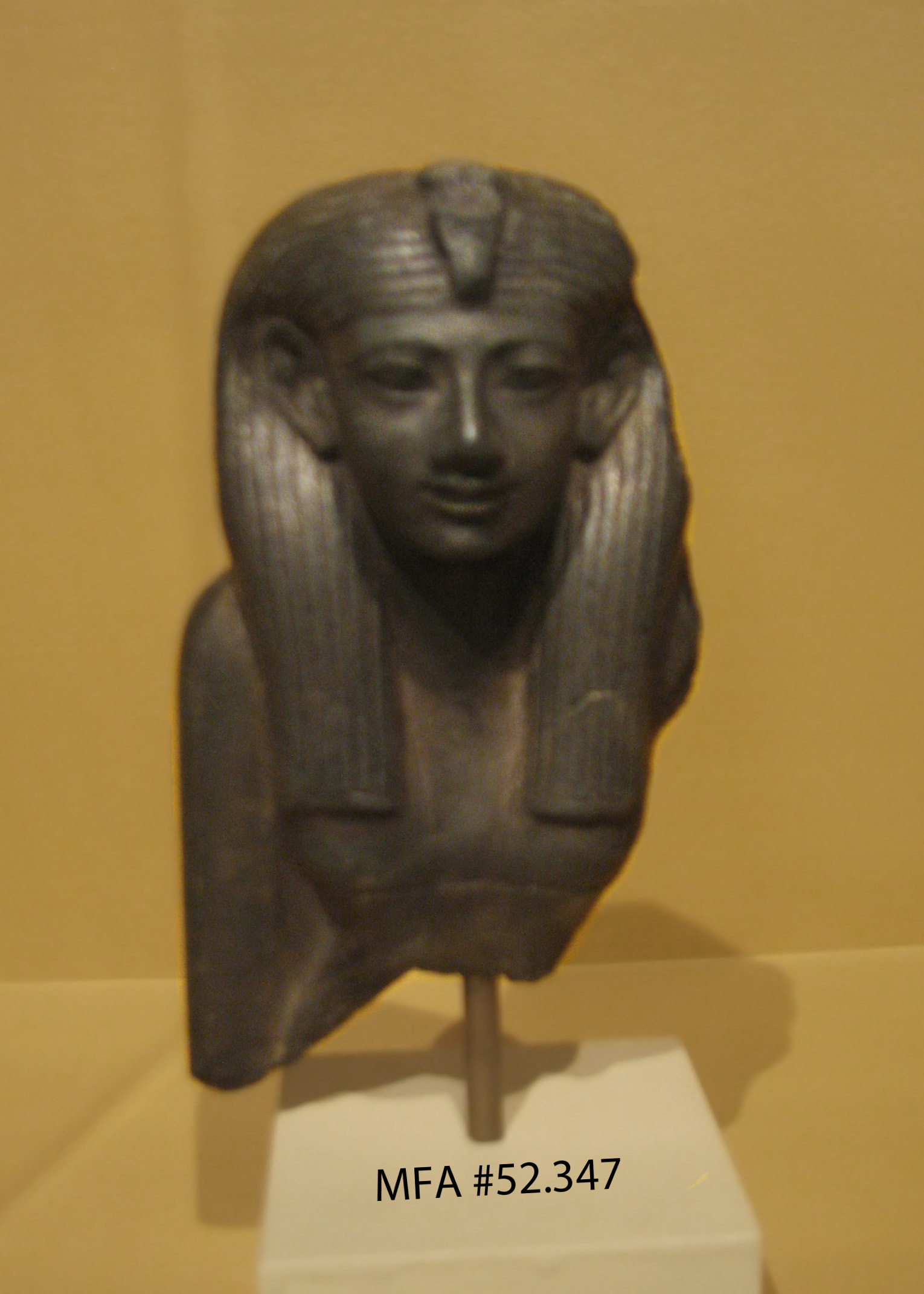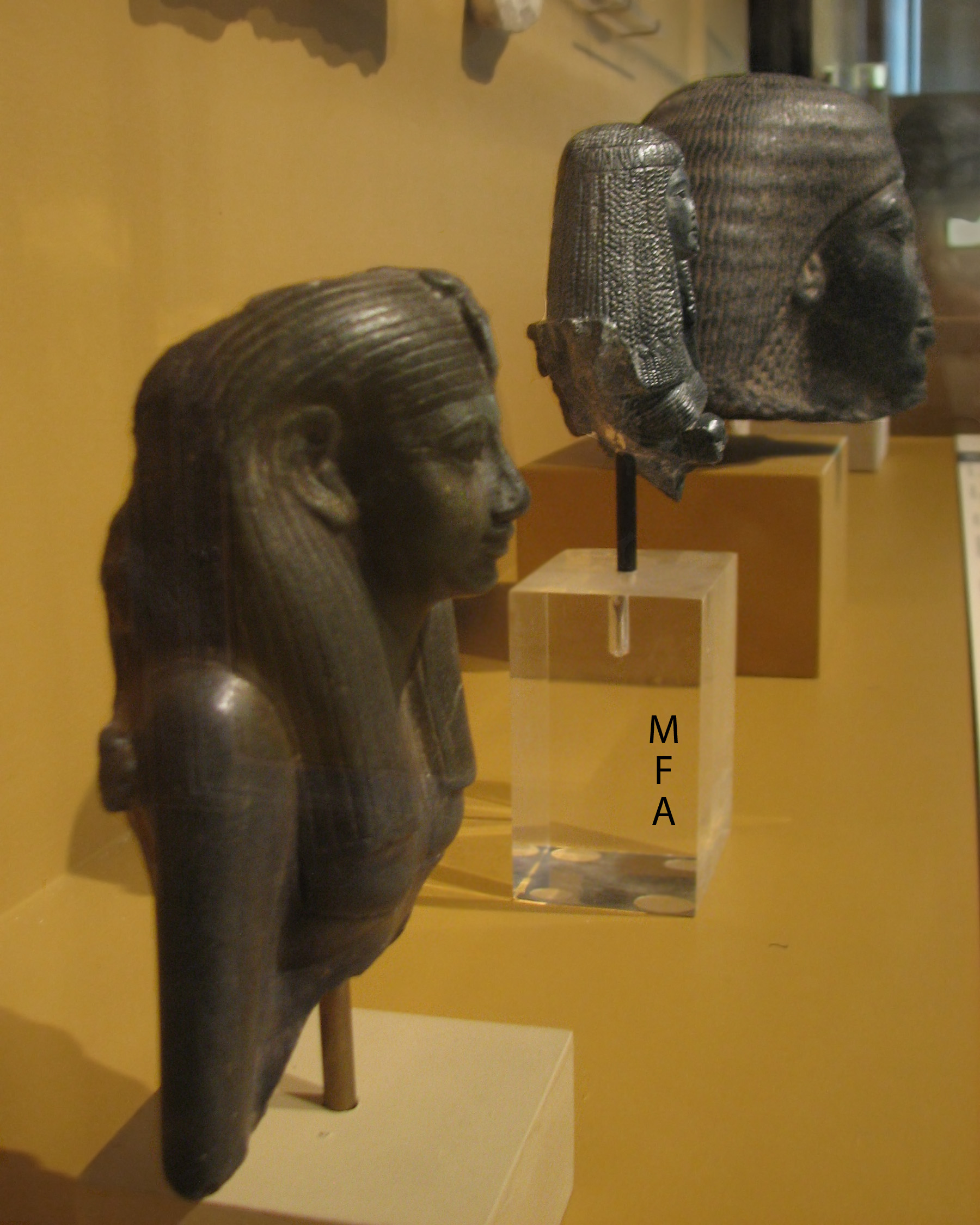
Fragmentary Statuette of Queen Hatshepsut
Egypt, New Kingdom, Dynasty 18 1550–1458 B.C.E., from Abydos
Quartz diorite, HxWxD: 8.9 x 4.1 x 4.4 cm (3 1/2 x 1 5/8 x 1 3/4 in.)
Gift of Mrs. Joseph Lindon Smith in memory of Joseph Lindon Smith 1952, MFA #52.347



